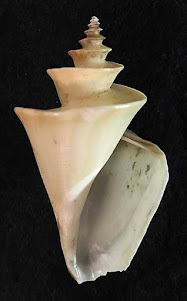Lepidolite belongs to the mica group of minerals characterized by their “shiny” appearance. This group encompasses muscovite, biotite, and other similar “soft” minerals (i.e., “soft” in the sense of being easily scratched by a knife blade). Muscovite is clear to brownish, biotite is brownish to dark brown, but lepidolite is a lilac gray, rose-colored, pale yellow, or even pale gray member of the mica group.
Shown above are three views of a hand-specimen (2.3 inches wide by 2.5 inches long) of lepidolite that the author collected, with permission, from mined material taken from pegmatite dikes at the Stewart Mine, near Pala, San Diego County, California. The associated red-colored mineral is rubellite (a gemstone of the mineral tourmaline). See one of my previous posts (Sept. 3, 2016), which concerns rubellite.
Lepidolite consists of the elements: potassium, aluminum, silicon, oxygen, as well as lithium, rubidium, and fluorine. Leipidolite is the most abundant lithium-bearing mineral, yet leipidolite is rare. This mineral usually occurs in fine to medium-grained crystalline aggregates, as shown in the images above. Large crystals are much rarer than in the other micas. The hardness of lepidolite is approximately 2.5.
SOME ADDITIONAL INFORMATION ABOUT THE ELEMENT LITHIUM:
Lithium has an atomic number 3. It is a soft, silvery-white alkali metal that reacts vigorously with water, and is the least dense metal. It occurs in 1) very low concentrations in igneous rocks, 2) in complex granitic pegmatites [via late-stage hydrothermal fluids], and 3) in brine waters of that accumulate in salt desert lagoons (salars). The salt-laden waters are then pumped to the surface in places like the Atacama Desert in Chile, South America.
Google Earth Pro satellite image (2015) of much of South America, showing where one of the main active salt deserts east of the town of Antofagasta, Chile. Runoff waters from the nearby mountains, drain into the adjacent desert floor, where flamingo birds have lived for millennia. As mentioned in my next post, flamingoes are sustained by eating the brine shrimp in these salty waters. In the last 20 years or so, the brine waters have locally been pumped into evaporation pools for further evaporation, thereby increasing the concentration of brine waters containing dissolved salts containing lithium. Eventually the concentrated fluids are shipped to processing plants in order to extract the lithium.
Chile, Australia, China, and Argentina have the largest known reserves of lithium, with Chile (brine waters) and Australia (ore mining) having the most. The USA is not a significant producer of lithium. A few states (Arkansas, California, Nevada, North Carolina, and Utah) have some deposits, but this element is derived mainly from salt deserts in Chile and Argentina.
Lithium has excellent conductivity, thus it is used in the manufacturing of rechargeable batteries. More and more, it is in demand for making batteries used in making electric vehicles, computers, and cell phones. This element is also used in making glass, ceramics, and polymers, as well as being used in medicines.
Literature consulted:
Wikipedia
Berry, L.G. and B. Mason. 1959. Mineralogy: concepts, descriptions, and determinations. W.H. Freeman and Company, San Francisco. 630 pp.




























